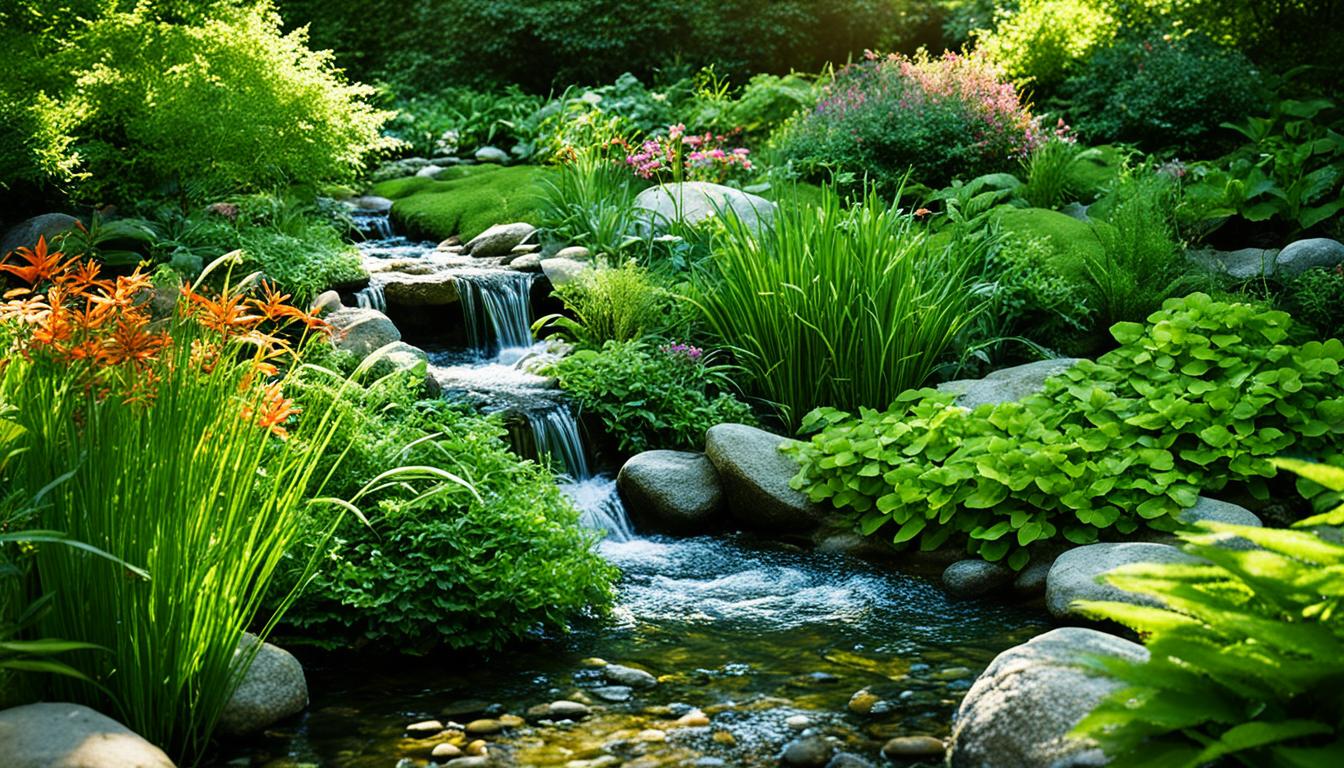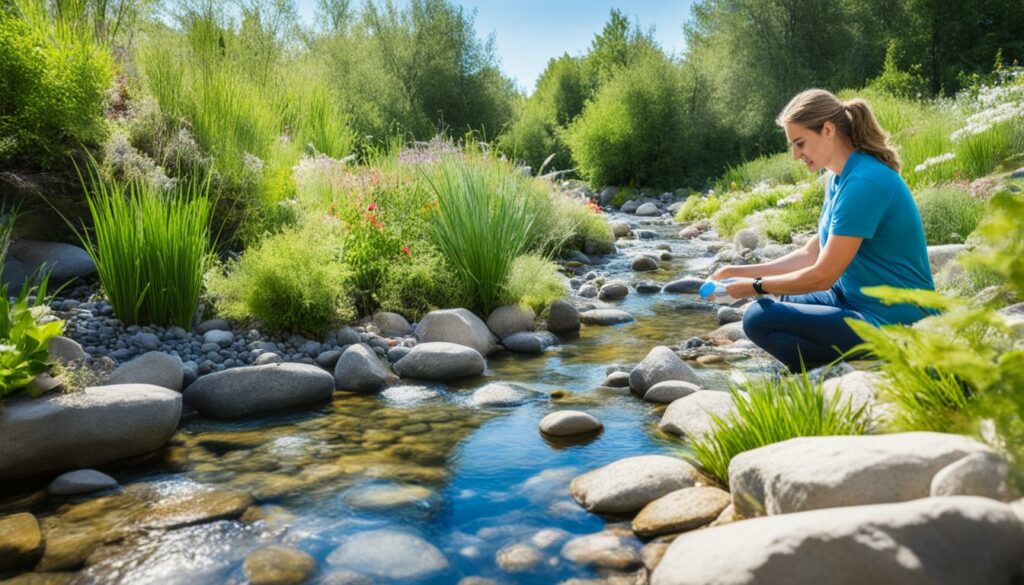
Maintaining garden streams is crucial for creating a thriving ecosystem in your backyard. These beautiful water features not only enhance the aesthetic appeal of your landscape but also support local wildlife. Effective stream maintenance involves a clear understanding of the interconnectedness between your yard and the health of the stream. By following essential tips and implementing sustainable practices, you can ensure that your backyard streams remain vibrant and beneficial, all while contributing to the overall wellness of the environment.
Understanding the Importance of Garden Streams
The integration of garden streams into backyard ecosystems offers numerous advantages that extend beyond mere aesthetics. By creating a thriving habitat for aquatic life, these streams contribute to essential ecosystem benefits. Homeowners who prioritize the maintenance of these landscape streams can enhance both ecological health and personal enjoyment of their outdoor spaces.
Benefits of Garden Streams for Ecosystem
Garden streams support biodiversity by providing a habitat for a variety of organisms. The surrounding vegetation plays a vital role by filtering pollutants and retaining moisture, which leads to improved water quality. This translated into more robust ecosystems that can withstand environmental changes. The importance of streams cannot be overstated; they serve as conduits that facilitate the movement of nutrients throughout the ecosystem. These streams enhance the overall health of the environment while simultaneously promoting backyard stream benefits such as natural water filtration.
Role of Streams in Backyard Landscapes
In addition to ecological functions, streams play a significant role in the aesthetic features of a backyard. Their gentle flow adds a soothing sound and visual delight to any outdoor space. These landscape streams create opportunities for recreational activities, making backyards more enjoyable for families and pets alike. The presence of garden streams also improves the functionality of the landscape by facilitating rainwater absorption, thus mitigating flood risks. Integrating streams into backyard designs provides a multifaceted approach that combines beauty, utility, and environmental stewardship.
Practicing Stream Stewardship
Understanding the intricate connection between yard management practices and stream health is essential for effective stream stewardship. The activities carried out in our backyards can significantly influence the quality and stability of nearby streams. By adopting responsible practices, homeowners can contribute to healthier ecosystems and a more sustainable environment.
Connection Between Yard and Stream Health
The condition of a stream is directly affected by the actions taken in the adjacent landscape. Simple stewardship steps, such as minimizing the use of chemicals and ensuring the presence of healthy vegetation along watercourses, play a crucial role in maintaining stream health. For instance, deep-rooted native plants have root systems that stabilize soil and prevent erosion, creating a beneficial buffer. This connection highlights how our backyard choices impact water quality downstream, making awareness key to stewardship.
Simple Steps for Effective Stream Stewardship
Implementing straightforward and practical stewardship practices can have lasting effects on stream health. Consider the following simple stewardship steps:
- Avoid mowing to the edge of the stream, allowing natural vegetation to thrive.
- Plant deep-rooted native species that enhance soil stability and reduce erosion.
- Refrain from disposing of organic waste near stream banks to prevent pollution.
- Maintain a safe distance for any structures from waterways to protect stream integrity.
By taking these actions, everyone can foster a sense of community responsibility towards shared natural resources while promoting the health of local streams.
Maintaining Garden Streams for Erosion Control
Managing garden streams effectively involves implementing erosion control measures that ensure both the stability of the streambanks and the health of the surrounding ecosystem. Utilizing appropriate vegetation and techniques becomes essential for preserving these vital water resources.
Utilizing Deep-Rooted Native Vegetation
Deep-rooted plants serve a key role in maintaining soil integrity along streambanks. These native species possess extensive root systems, capable of anchoring soil and reducing the risk of erosion. Adapted to local conditions, deep-rooted plants endure extreme weather, offering robust support for the streambank. The strategic planting of native trees and shrubs not only helps retain soil but also provides a habitat for various wildlife species, fostering biodiversity in the area.
Techniques to Prevent Streambank Erosion
Employing various erosion prevention methods can significantly fortify streambanks. A few effective streambank techniques include:
- Establishing a buffer of medium-height native grasses between manicured lawns and the streambed.
- Utilizing natural materials, such as woody debris, for streambank stabilization.
- Avoiding hard structures like riprap, which may inadvertently increase downstream erosion.
These methods contribute to the overall ecological health of the area while safeguarding the delicate balance of the garden streams.
Native Plant Selection for Healthy Streams
Choosing the right vegetation is crucial for the health of garden streams. The selection of native plants plays a significant role in supporting vibrant ecosystems and ensuring riparian health. These plants have evolved alongside local wildlife and offer numerous benefits to their environments.
Importance of Planting Native Species
Planting native species is essential due to their adaptability to local conditions. They require less water and maintenance, which makes them ideal for streamside restoration. Native plants effectively filter pollutants, reduce runoff, and provide habitats for a variety of wildlife. Implementing native plants selection fosters healthy ecosystems by promoting biodiversity and supporting the delicate balance within riparian zones.
Recommended Native Plants for Riparian Areas
When selecting riparian plant species, consider options that thrive in moist environments. Some recommended native plants include:
- Red-twig dogwood
- Willow
- Blue wildrye
Incorporating these species enhances streambank stability and ecological function. By supporting riparian health through well-chosen native plants, one contributes to the overall vitality of local ecosystems.

Preserving Riparian Areas
Riparian areas play a vital role in maintaining the health of adjacent streams. With their rich biodiversity and unique ecosystem functions, riparian forests offer significant riparian benefits that contribute to overall stream protection and enhanced stream health.
Benefits of Riparian Forests on Streams
Riparian forests serve as natural filters, trapping sediment and pollutants before they can enter waterways. This natural filtration process is crucial for preserving water quality. Additionally, these areas stabilize stream banks, thereby reducing erosion and preventing harmful sediment from flowing into the stream. The presence of trees and vegetation also provides shade, essential for maintaining cooler water temperatures that support fish populations, particularly cool-water species. Overall, the forest impacts positively on the stream ecosystem by contributing to ecological diversity.
Establishing a Riparian Buffer Zone
Creating a riparian buffer zone involves planting native species along the stream's edge. This corridor of vegetation acts as a protective barrier that absorbs runoff and enhances water quality. Ideal buffer zone benefits include improved habitat for wildlife and reduced nutrient loading into the stream. Experts recommend a buffer width of at least 50 feet to effectively enhance stream health and minimize human impact on aquatic environments.
Managing Water Quality in Garden Streams
Water quality management plays a vital role in ensuring the health of garden streams. When streams are polluted, the effects ripple through aquatic ecosystems, leading to decreased stream biodiversity and negatively impacting aquatic life. Understanding how to implement effective pollutant prevention strategies is crucial for maintaining a clean and thriving stream environment.
Preventing Pollutants from Entering Streams
Preventing pollutants from entering streams requires conscious efforts from homeowners. The following practices can help maintain clean water:
- Avoid using harmful chemicals and pesticides in your garden.
- Direct runoff through vegetated areas to filter pollutants.
- Properly dispose of hazardous materials like paint and batteries.
- Be mindful of household activities that may introduce contaminants, such as washing cars or disposing of pet waste.
Implementing these strategies enhances water quality management and supports the overall health of the stream and its surrounding ecosystems.
Maintaining Oxygen Levels for Aquatic Life
Oxygen levels are crucial for sustaining various forms of aquatic life in garden streams. To maintain optimal oxygenation:
- Incorporate water features such as fountains or waterfalls to aerate the water.
- Regularly clear debris and prevent algae buildup to enhance oxygen availability.
- Encourage diverse plant life, which can help contribute to higher oxygen levels.
Maintaining balanced oxygen levels fosters robust aquatic ecosystems, allowing species to thrive in a healthy environment.

Retaining Natural Features in Garden Streams
Encouraging the retention of natural features in garden streams is vital for the overall health of the ecosystem. Two significant elements that contribute to this health are downed wood and beaver activity, both of which provide numerous benefits to the surrounding landscape.
Importance of Downed Wood and Debris
Downed wood and organic debris play a critical role in stream ecosystems. They create essential habitats for various species, including fish and invertebrates. The presence of this natural material aids in ecosystem support by supplying organic resources that sustain the food web. Additionally, downed wood enhances biodiversity within the stream environment, allowing different organisms to thrive.
Encouraging Natural Habitat with Beaver Activity
Beaver activity can have remarkable beaver benefits for garden streams. These industrious creatures create wetlands through dam-building, which significantly boosts water retention in the area. This not only improves the habitat for diverse flora and fauna but also promotes the overall resilience of the landscape. Beaver-flooded areas support rich natural habitats, contributing to a multi-functional ecosystem that can withstand local ecological challenges.
Conclusion
In summary, maintaining garden streams is crucial for the ecological health of both the surrounding landscape and ecosystem. Implementing effective conservation practices enhances the vitality of these waterways, benefiting plant and animal life alike. Homeowners are encouraged to adopt stewardship techniques that prioritize the sustainability of their garden streams.
By understanding the interconnected relationships between stream health, erosion control, and water quality management, individuals can take proactive measures. The strategies outlined in this article serve to create healthier streams and promote a thriving community of diverse flora and fauna.
Ultimately, committed garden stream maintenance leads to a resilient ecosystem that not only supports wildlife but also enriches our natural surroundings. By fostering these vital resources, we contribute to the overall ecological integrity of our neighborhoods and beyond.








